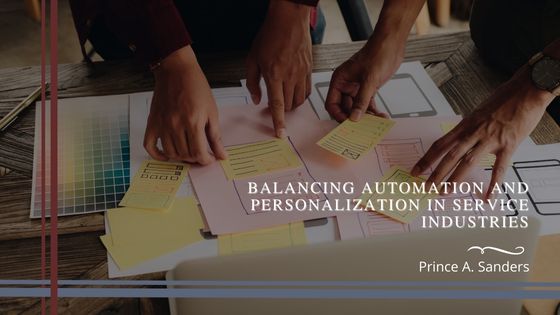The service industry thrives on human connection. A friendly waiter remembering your regular order, a hairdresser who knows exactly how you like your haircut – these small touches create a sense of value and appreciation that keeps customers coming back. But in today’s fast-paced world, automation is king. Self-service kiosks, chatbots, and online booking systems are all the rage, promising efficiency and convenience. So, how do service industries find the sweet spot between automation’s efficiency and personalization’s charm?
Let’s be honest: automation has its perks. It frees up staff time for more complex tasks, reduces wait times, and allows businesses to operate 24/7. Imagine a restaurant where you can order and pay through an app, saving yourself the hassle of flagging down a waiter. Or a bank where you can handle most transactions through a user-friendly ATM, avoiding long queues. Automation makes things quicker and smoother, which is great for busy customers on the go.
But here’s the flip side: too much automation can leave customers feeling cold and unimportant. Imagine walking into a hotel where a robotic arm checks you in, with no human interaction whatsoever. It might feel impersonal and leave you wondering if you’re just another number in the system.
The key lies in striking a balance. Here are some ways service industries can achieve this:
- Automate the Mundane, Personalize the Meaningful: Repetitive tasks like scheduling appointments, placing orders, or checking in can be readily automated. This frees up your staff to focus on what truly matters – building rapport with customers, addressing specific needs, and offering that human touch that goes the extra mile.
- Use Automation to Power Personalization: Data collected through automated systems can be a goldmine for personalization. Imagine a clothing store that uses your purchase history to recommend outfits you might like. Or a travel agency that curates personalized vacation packages based on your past travel preferences. Automation becomes a tool to understand your customers better, not replace them.
- The Human Touch is Irreplaceable: Let’s not forget the power of a genuine smile, a friendly conversation, or a helpful employee going above and beyond. Train your staff to be attentive, knowledgeable, and empathetic. Empower them to solve problems creatively and offer personalized solutions. In a world of automation, human connection becomes the ultimate differentiator.
- Give Customers a Choice: People have different preferences. Some might relish the convenience of self-service, while others crave human interaction. Offer both options whenever possible. Let customers choose how they want to interact with your business, whether it’s through an app, a chatbot, or a friendly face behind the counter.
Here are some real-world examples of service industries getting this balance right:
- The High-Tech Salon Experience: Many salons now offer online booking and appointment reminders. But they also understand the importance of personalized service. Stylists consult with clients to understand their hair goals and preferences, creating a customized experience.
- The Rise of the “Tech-Savvy” Waiter: Restaurants are using tablets for waiters to take orders and process payments. But these tools empower waiters, not replace them. They can spend more time interacting with customers, offering recommendations and ensuring a smooth dining experience.
- The Future of Banking: While online banking and ATMs are convenient, many banks are investing in “human-centric” branch experiences. Financial advisors are readily available to offer personalized financial advice, while friendly tellers assist with complex transactions.
Beyond the Basics: Building Loyalty in an Automated Age
Finding the right balance between automation and personalization is just the first step. To truly thrive in today’s competitive landscape, service industries need to go beyond the basics and build customer loyalty in an increasingly automated age. Here are some additional strategies:
- Focus on Building Relationships: Automation can streamline interactions, but it can’t build lasting relationships. Train your staff to remember customer preferences, celebrate special occasions, and go the extra mile to make them feel valued.
- Personalize the Communication: Don’t bombard customers with generic emails or mass marketing messages. Use customer data to tailor your communication, offering relevant recommendations, exclusive promotions, and early access to new products or services.
- Anticipate Needs, Exceed Expectations: Don’t wait for customers to come to you with problems. Use data and past interactions to anticipate their needs and proactively offer solutions. This demonstrates that you care about their experience and are invested in their satisfaction.
- Embrace Feedback (and Act on It): Encourage customer feedback through surveys, reviews, and social media engagement. Actively listen to their concerns and suggestions, and use this feedback to improve your service offering and personalize the customer journey.
The Bottom Line: The Future is Human-Centric
Technology is undoubtedly transforming the service industry. But at the heart of it all, it’s still about people. Customers crave convenience, but they also crave connection. By finding the right balance between automation and personalization and by prioritizing relationship building, proactive communication, and exceeding expectations, service industries can create a winning formula for the future. In the future, technology will continue to be a powerful tool, but the human touch will remain the key differentiator. It’s the genuine smile, the helpful advice, and the unexpected gesture that will keep customers coming back for more, fostering loyalty and ensuring long-term success.
